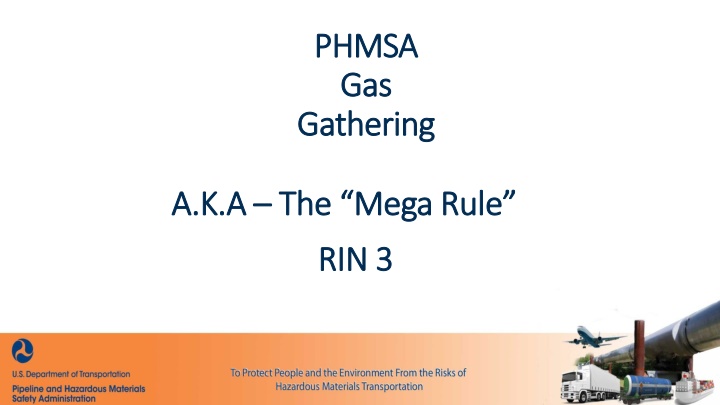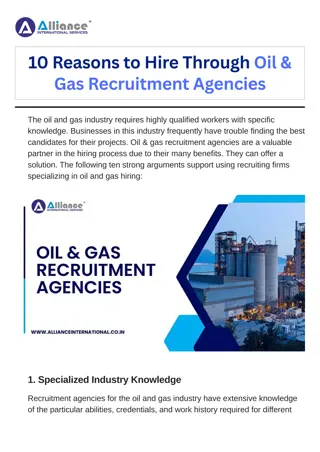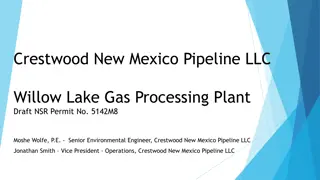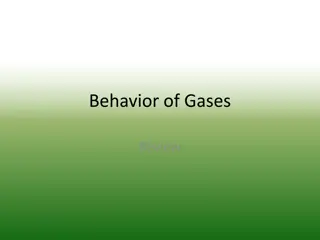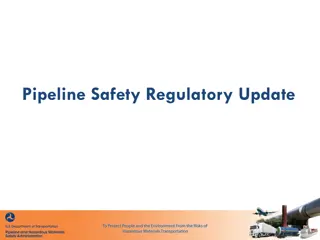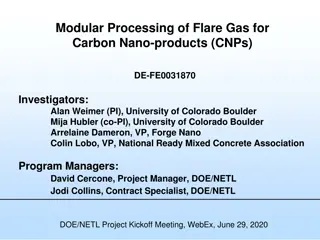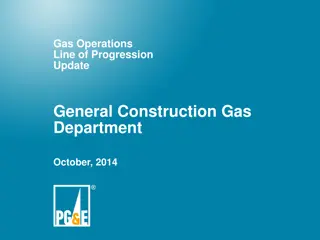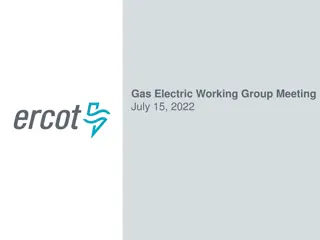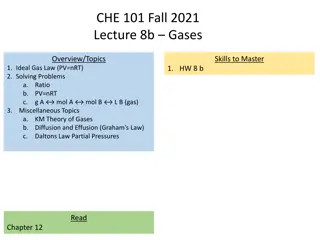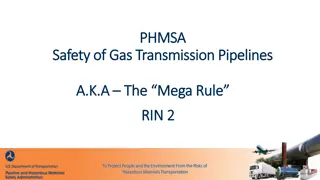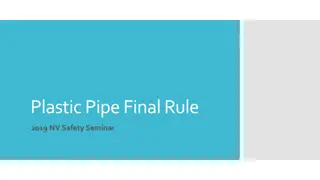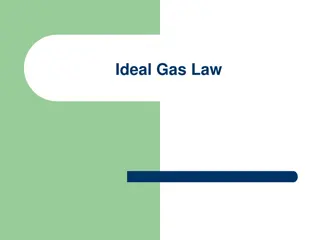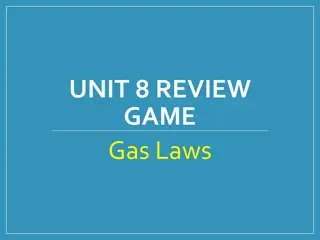PHMSA Gas Gathering Regulations Update
The PHMSA Gas Gathering regulations, also known as The Mega Rule, have been updated to include new types of regulated onshore gathering. The definition of gathering has been expanded to encompass additional requirements for operators, such as using API RP 80 1st edition. New types of gathering, including Type C and R, have specific guidelines and reporting requirements to ensure safety and compliance with the regulations.
Download Presentation

Please find below an Image/Link to download the presentation.
The content on the website is provided AS IS for your information and personal use only. It may not be sold, licensed, or shared on other websites without obtaining consent from the author.If you encounter any issues during the download, it is possible that the publisher has removed the file from their server.
You are allowed to download the files provided on this website for personal or commercial use, subject to the condition that they are used lawfully. All files are the property of their respective owners.
The content on the website is provided AS IS for your information and personal use only. It may not be sold, licensed, or shared on other websites without obtaining consent from the author.
E N D
Presentation Transcript
PHMSA PHMSA Gas Gas Gathering Gathering A.K.A A.K.A The Mega Rule The Mega Rule RIN 3 RIN 3
Docket No. PHMSA20110023 Amdt 192-129 Amdt 192-130 Docket No. PHMSA 2011 0023 Publication Date: November 15, 2021 Correction Publication Date: May 4, 2022 Effective Date: May 16, 2022 Second Correction Publication Date: June 13, 2022
192.3 Definitions Gathering line means a pipeline that transports gas from a current production facility to a transmission line or main. This new regulation did not change the definition of gathering it just added new types of regulated onshore gathering. 192.8 Operators are still required to use API RP 80 1st edition (April 2000) to determine if gathering.
Previously Defined Gathering: Type A and Type B Type A Metallic and the MAOP produces a hoop stress of >20% SMYS. Non-metallic and the MAOP > 125 psig. In a class 2, 3, or 4
Previously Defined Gathering: Type A and Type B Type B Metallic and the MAOP produces a hoop stress of <20% SMYS. Non-metallic and the MAOP < 125 psig. In a class 3 or 4
New Types of Gathering: Type C and R Type C Outside diameter greater than or equal to 8.625 inches and any of the following: Metallic and the MAOP produces a hoop stress of > 20% SMYS If the stress unknown, segment is metallic and the MAOP > 125 psig or Non-metallic and the MAOP > 125 psig (862 kPa). In a class 1 Type R All others
Type C gathering 8.625 must: Follow All reporting requirements of Part 191 A new, replaced, relocated, or otherwise changed be designed, installed, constructed, initial inspection, and tested in accordance with the requirements in subparts B though G and J of this part applicable to transmission lines; Carry out a Damage Prevention program under 192.614; Develop and implement procedures for emergency plans in accordance with 192.615.
8 or greater AND meet criteria you must also: If metallic Installcontrol corrosion according to Subpart I Public Awareness Program - 192.616 Install and Maintain Line Markers - 192.707 Conduct Leakage Surveys - 192.706 (using leak-detection equipment
> 12 AND meet criteria you must also: If plastic pipe, comply with all applicable requirements of this part for plastic pipe or components. and Establish the MAOP of the pipeline under 192.619(a) or (c)
What is the Criteria? Method 1. Potential Impact Circle containing a building intended for human occupancy or other impacted site. Method 2. The segment is located within a class location unit (see 192.5) containing a building intended for human occupancy or other impacted site.
Important Dates: Incident Reports: May 16, 2022 Methodology for determining End Points: November 16, 2022 Annual Reports: March 15, 2023 Compliance with 192.9 for Type C that exist prior to May 16, 2022: May 16, 2023 Compliance with 192.9 for lines that become Type C after May 16, 2022: 1 year from date
